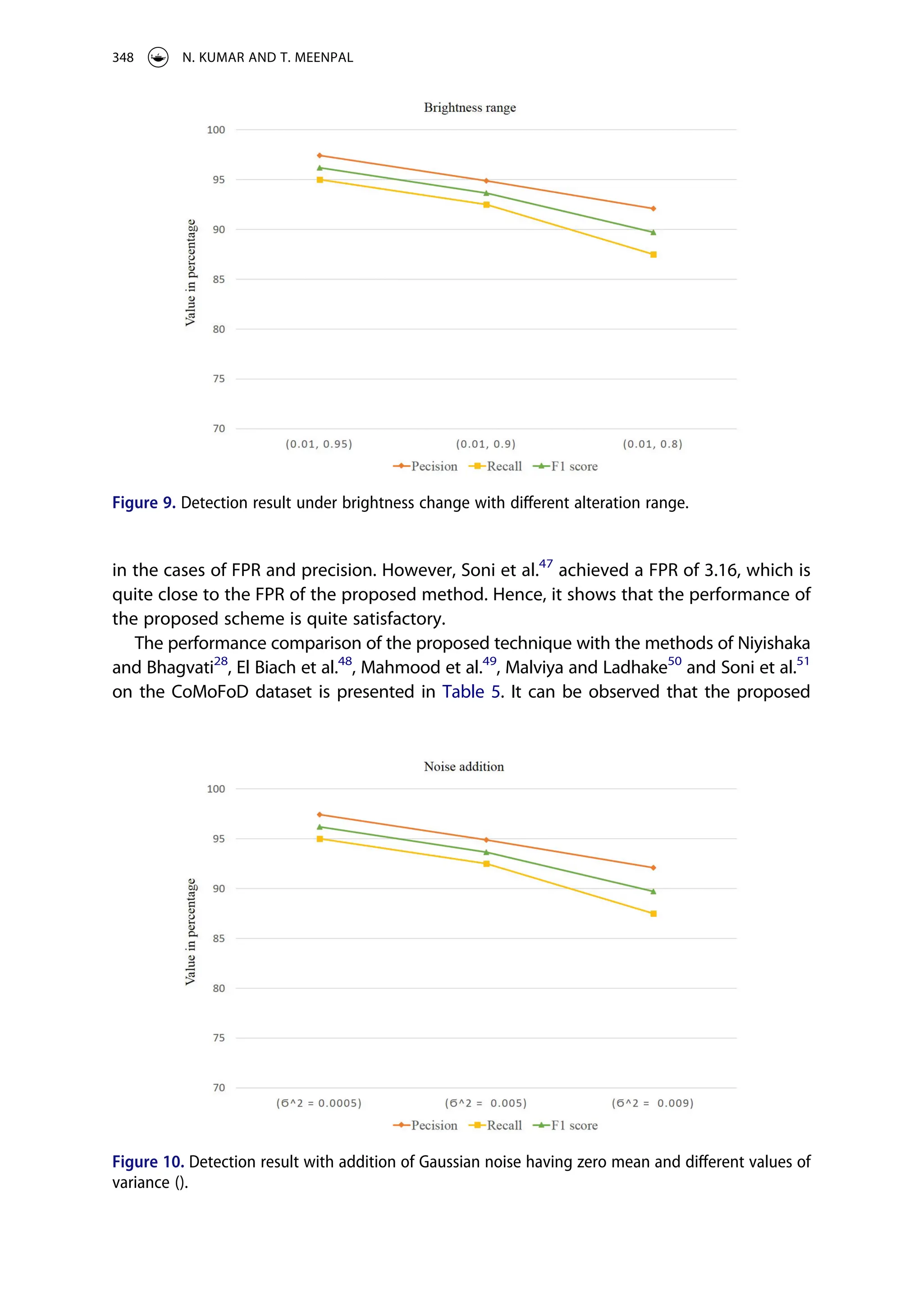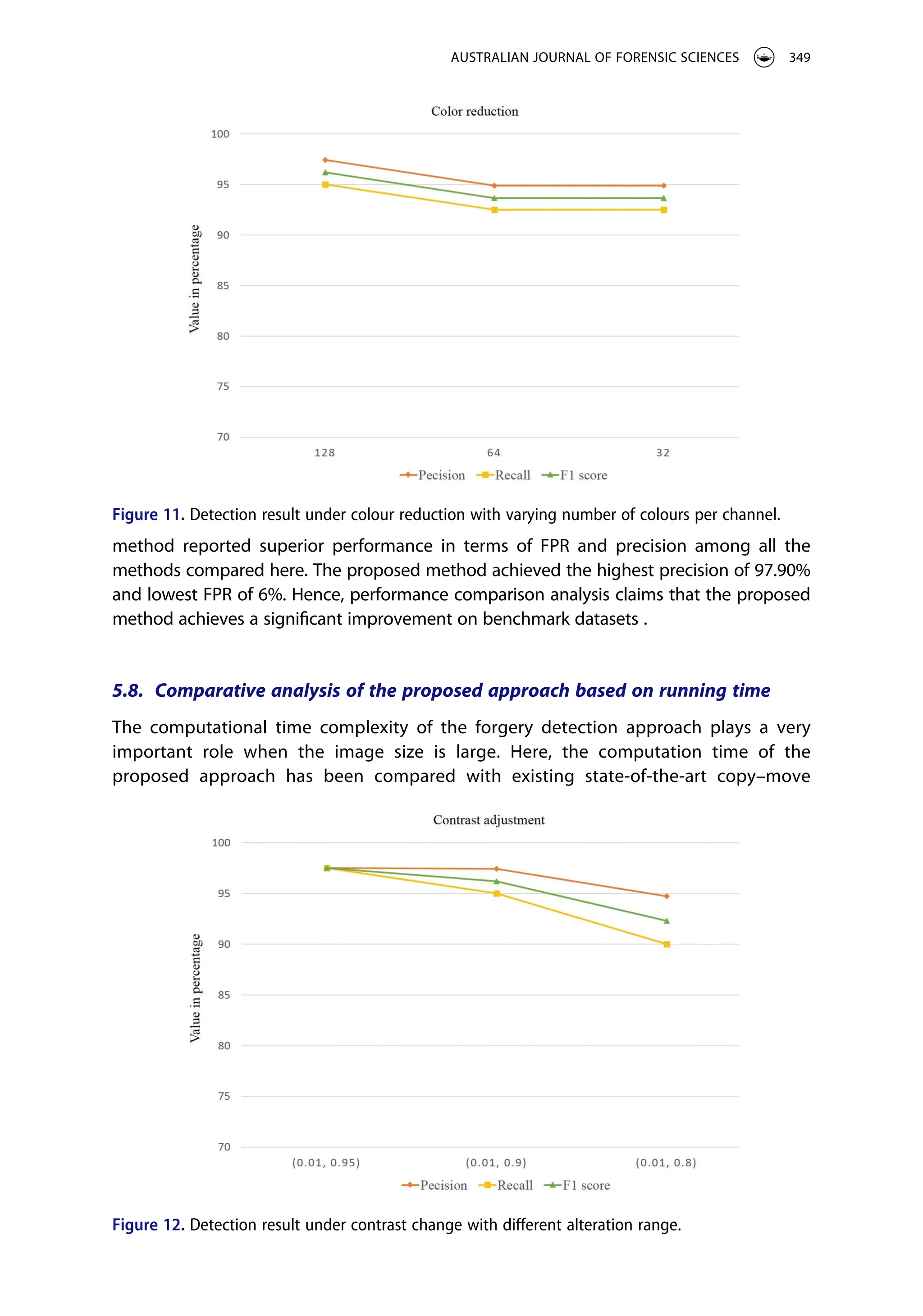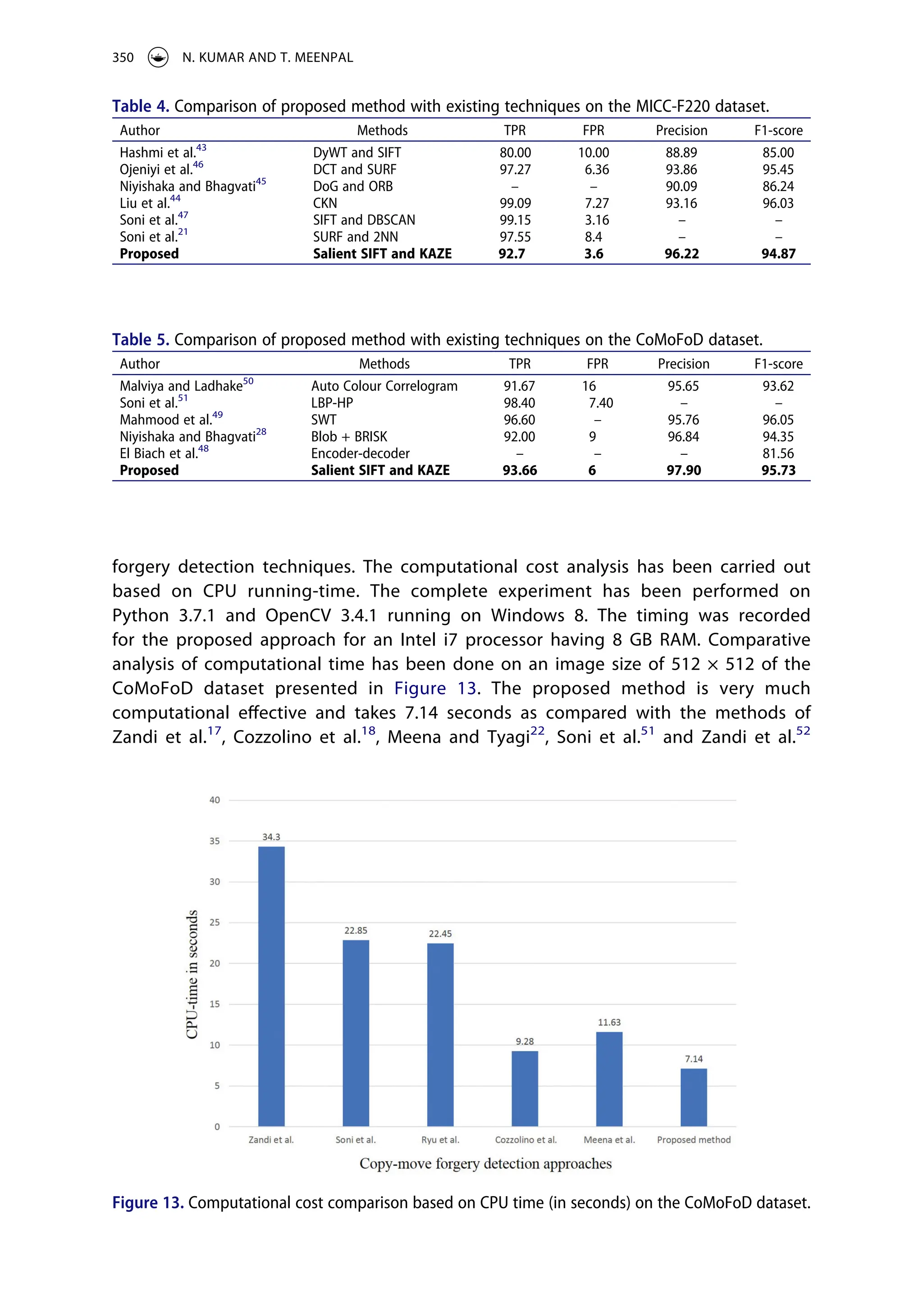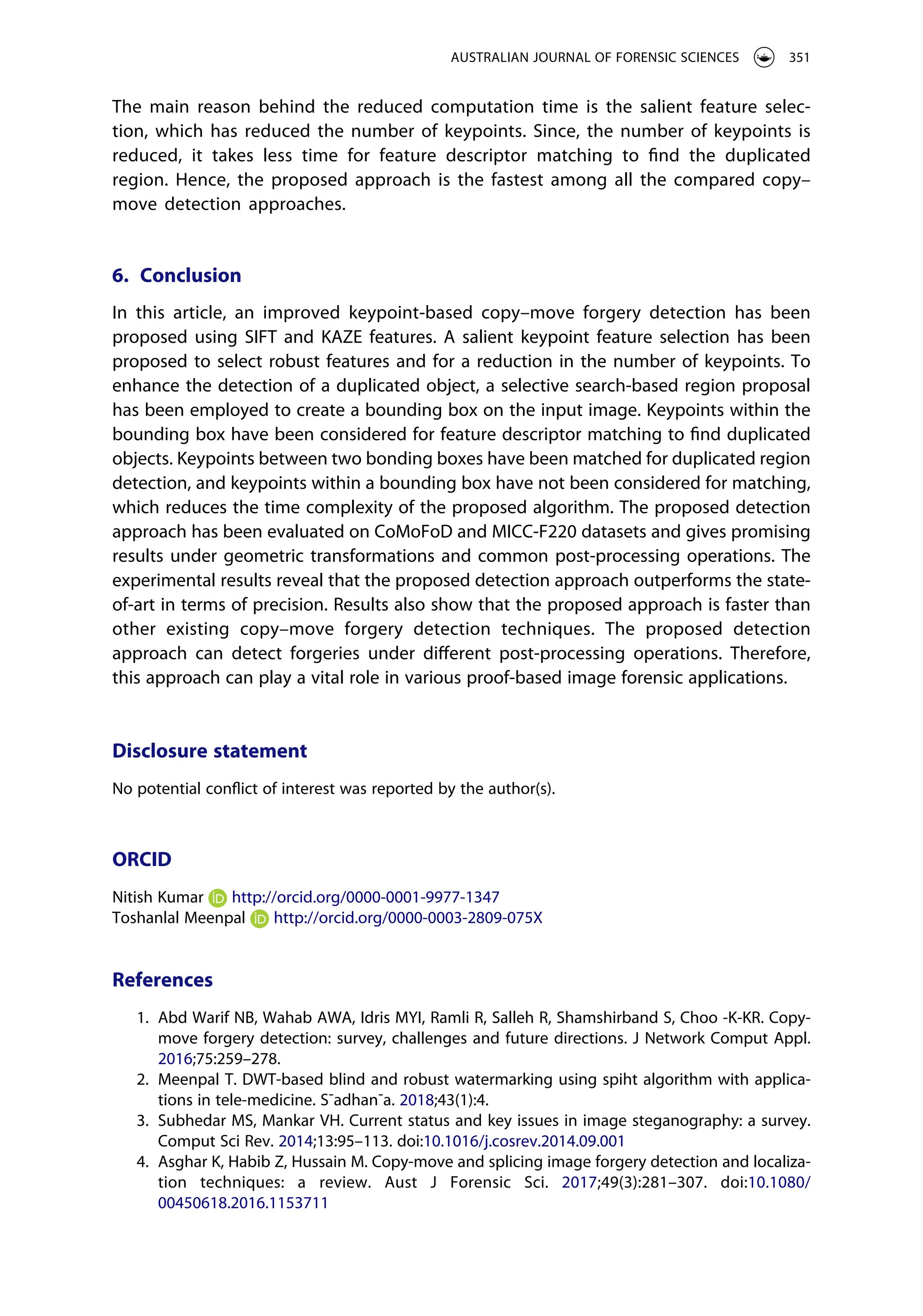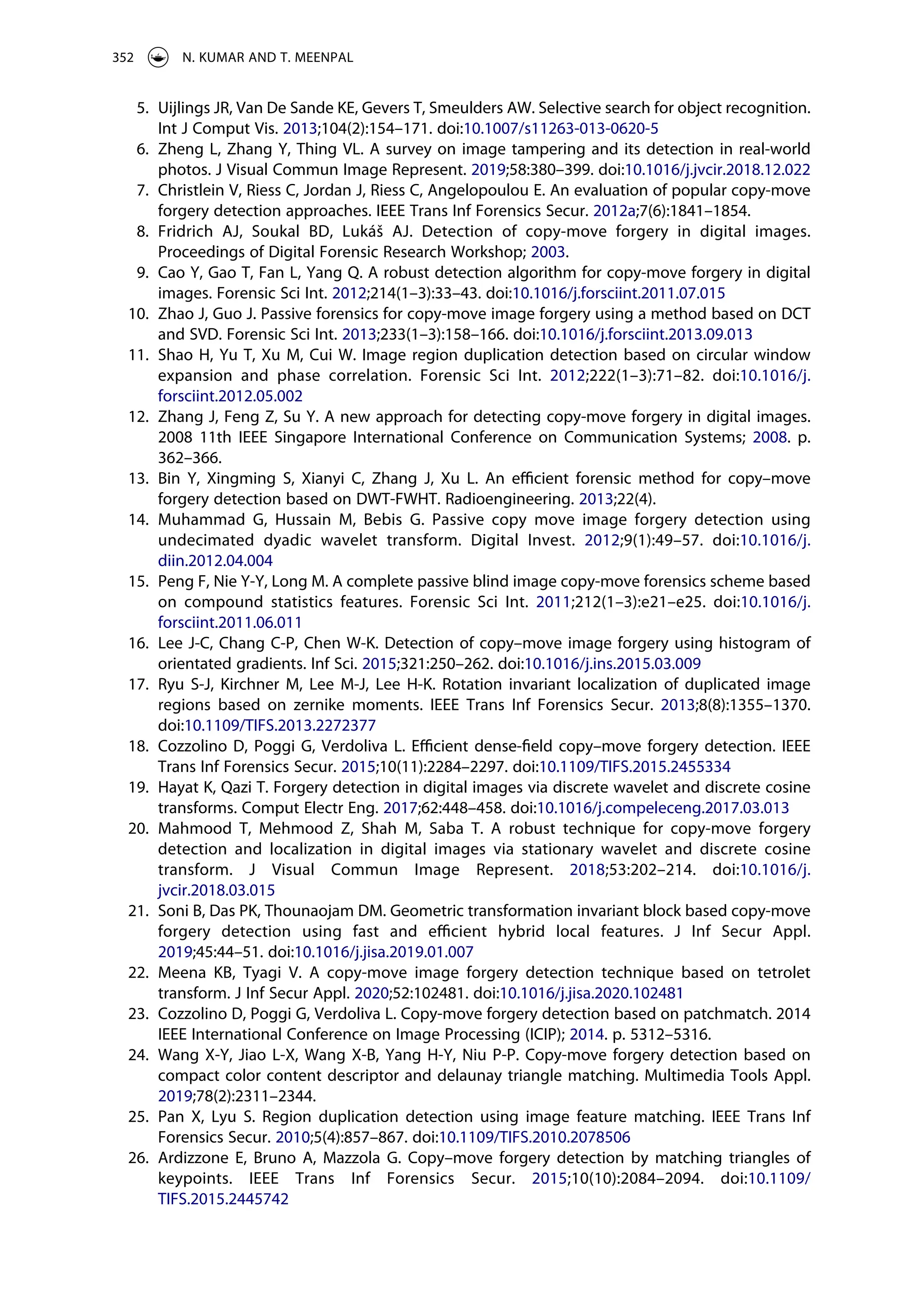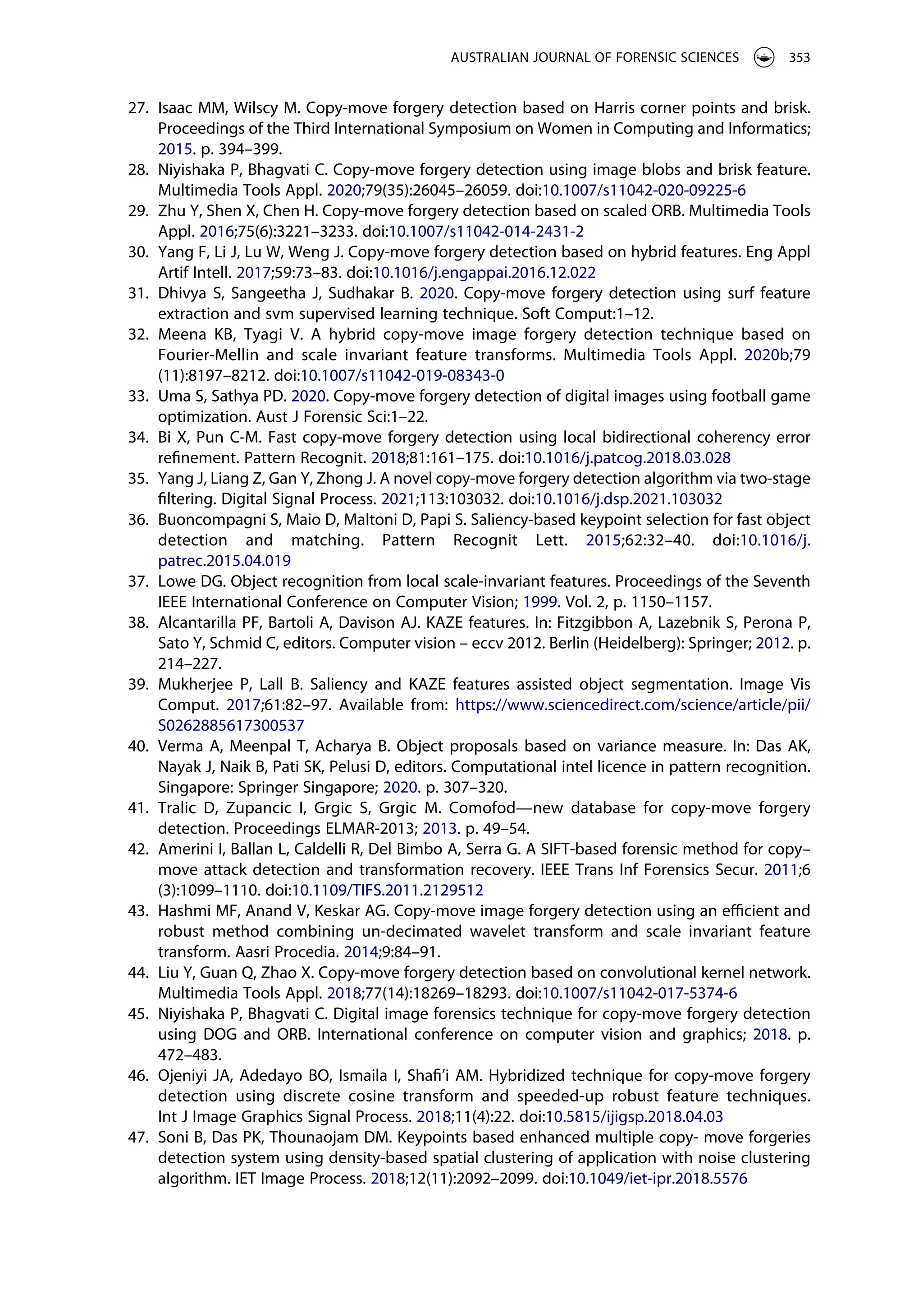The document describes a proposed method for detecting copy-move image forgery using salient keypoint selection. Keypoints are extracted from images using SIFT and KAZE features. Salient keypoints are selected to reduce the number of keypoints and computation time for matching. Bounding boxes are generated around objects using selective search to match keypoints between boxes and detect duplicated regions, eliminating the need for outlier filtering. The method is evaluated on benchmark datasets and outperforms state-of-the-art techniques under geometric transformations and post-processing operations.
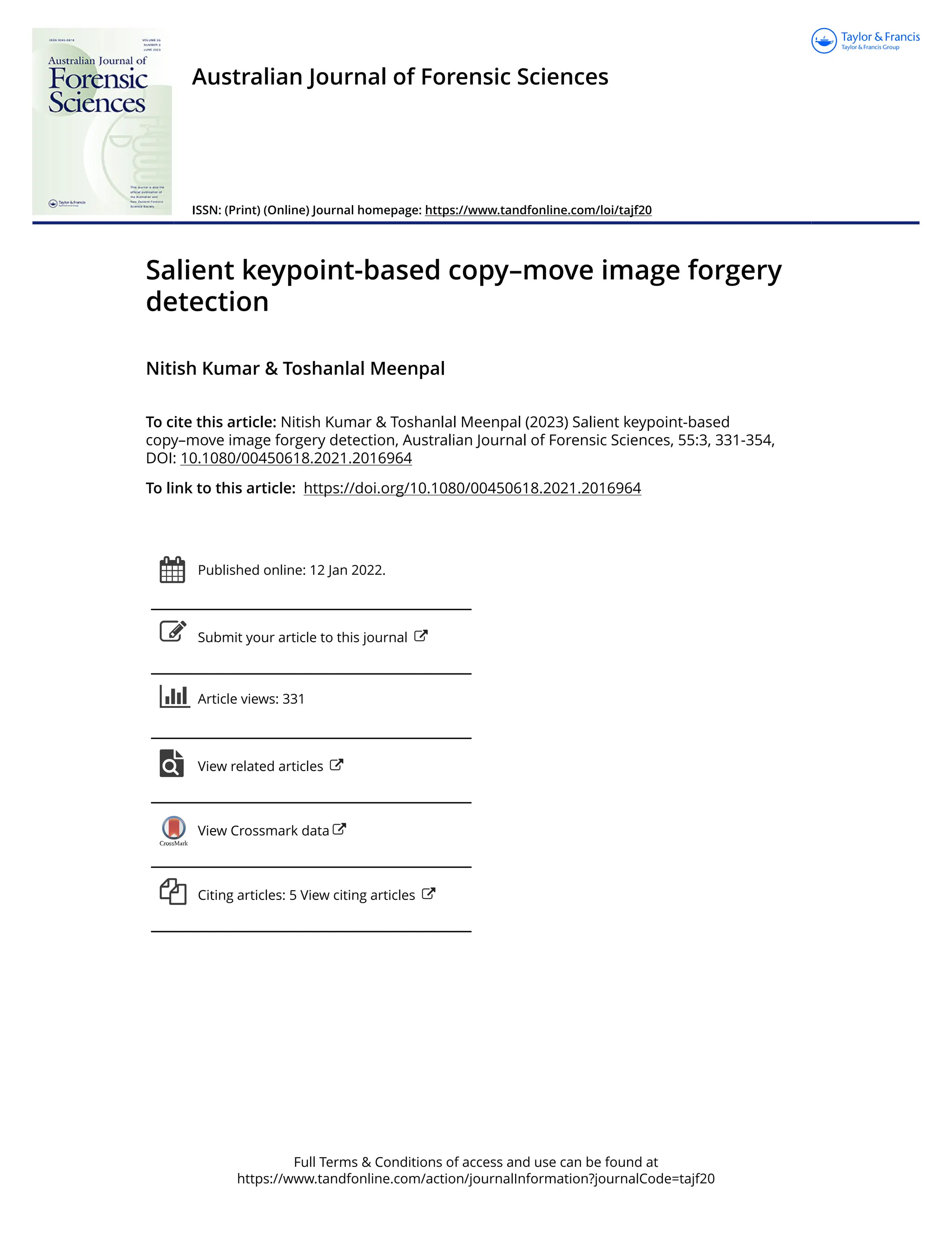

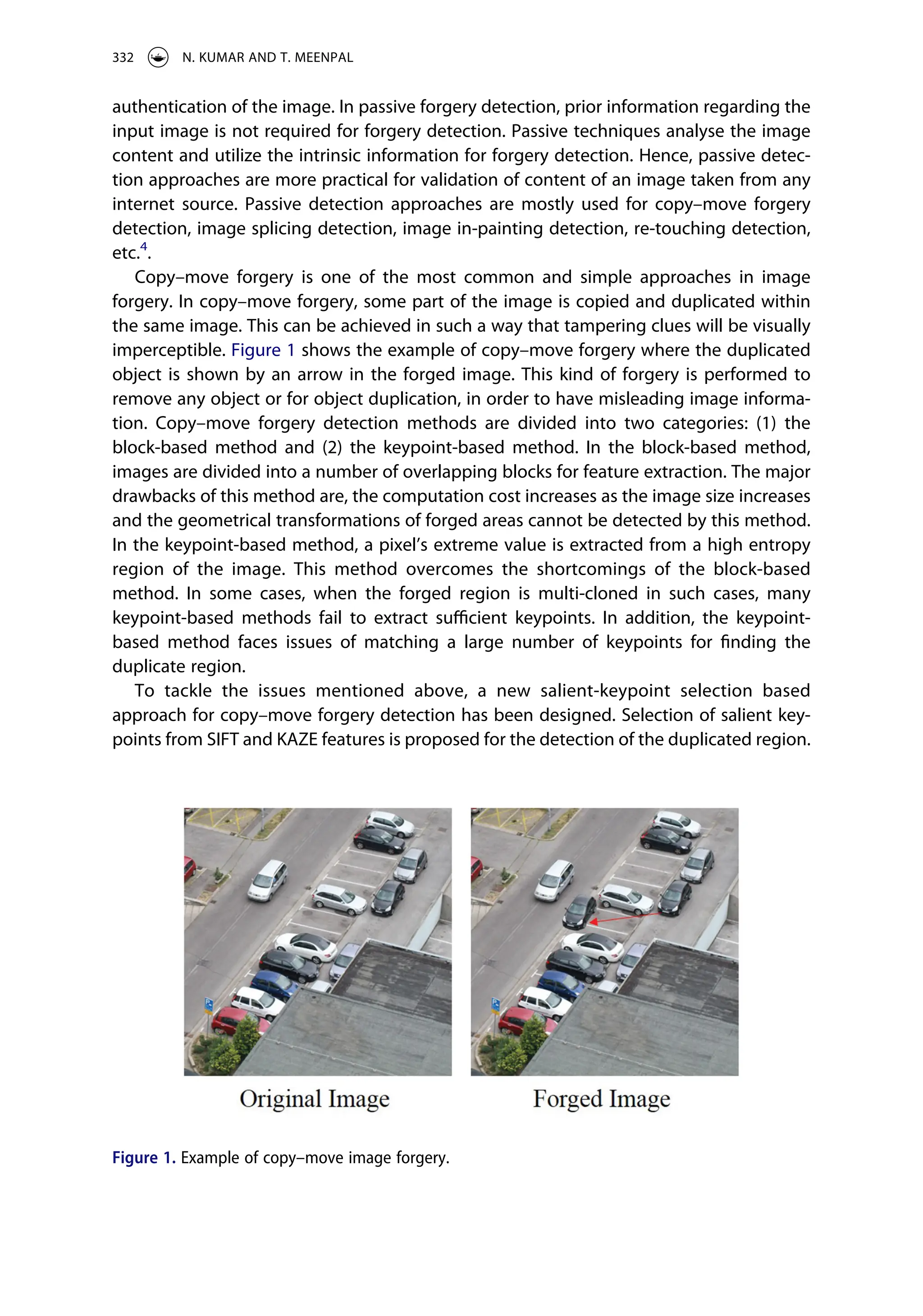
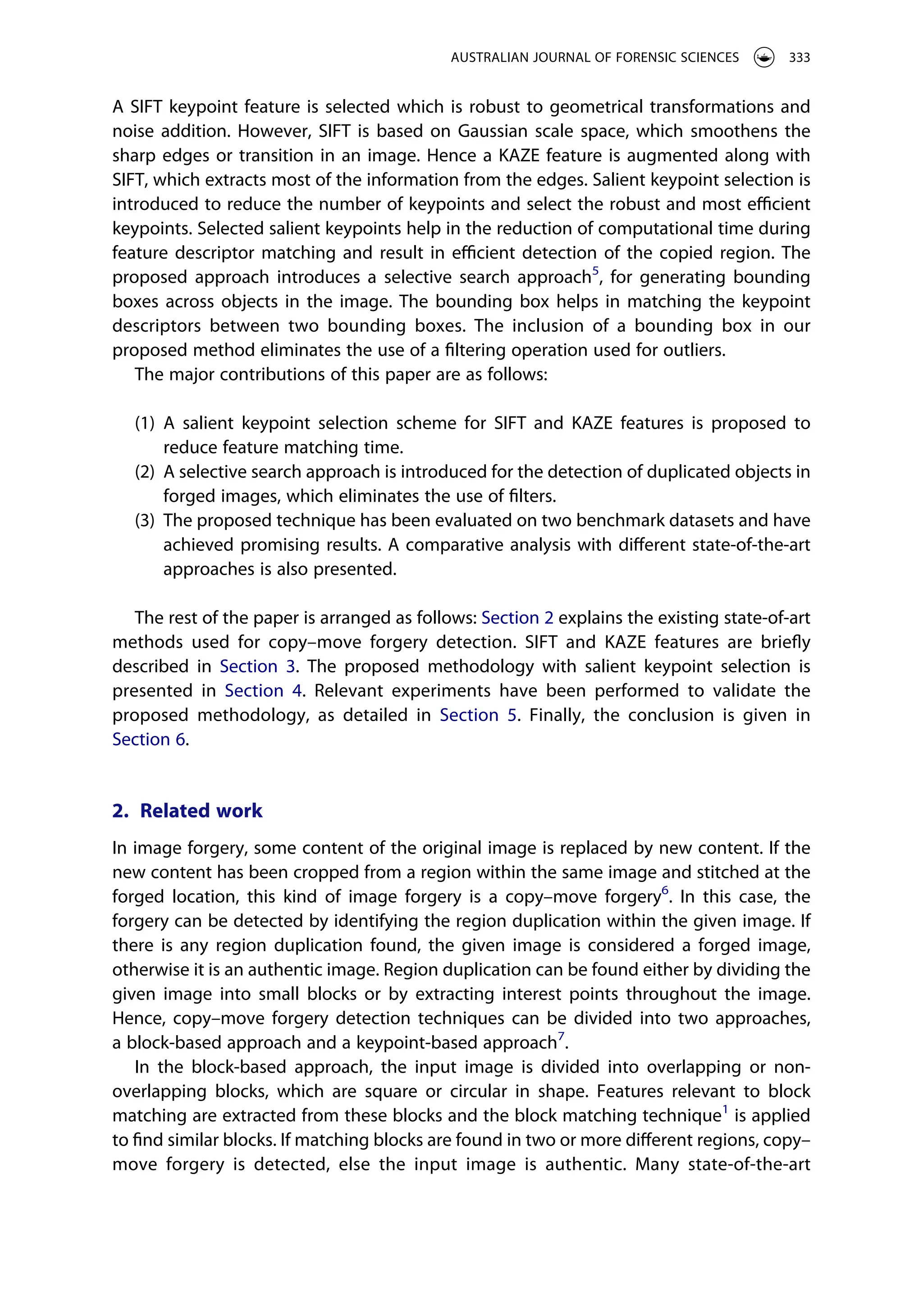
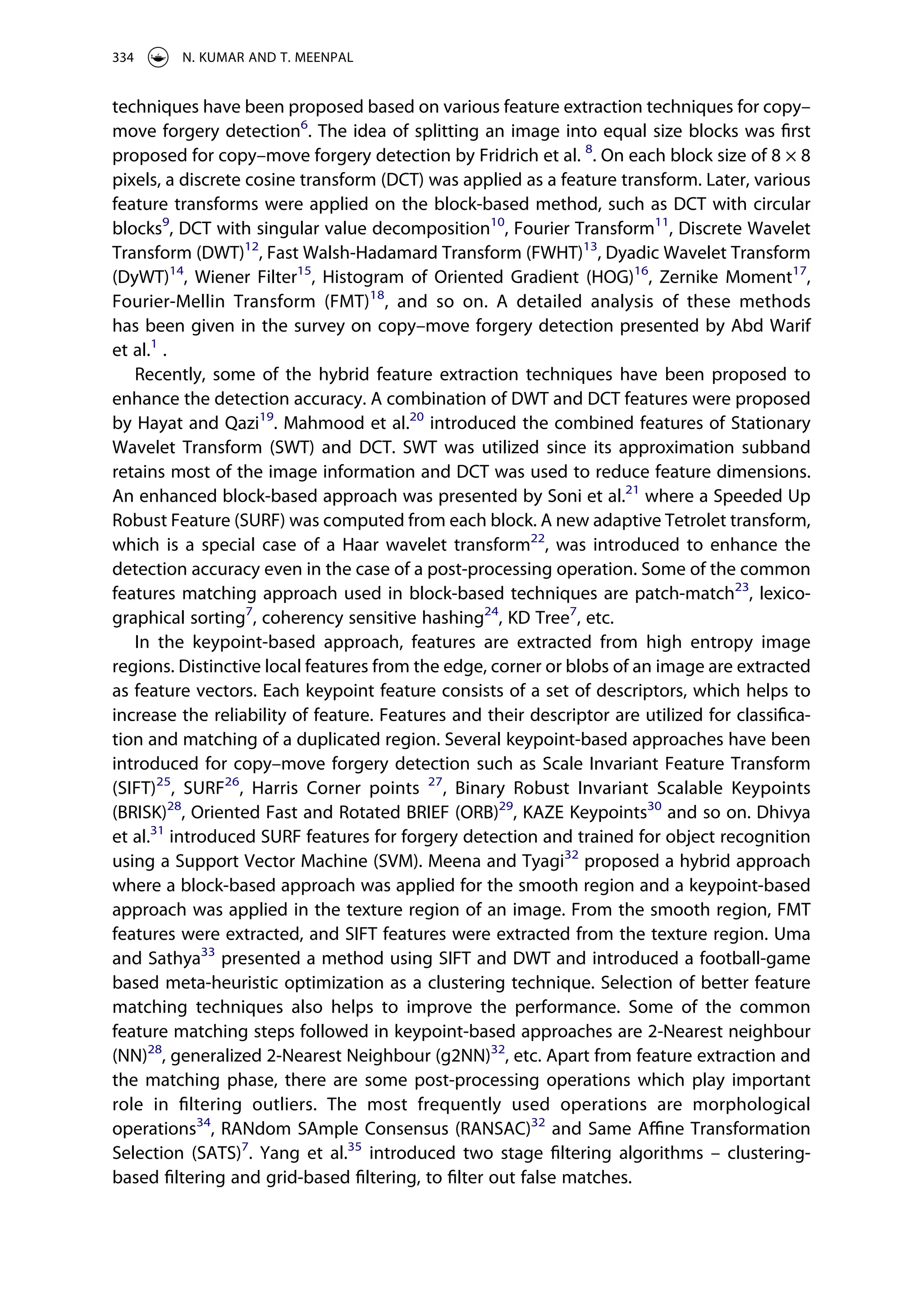
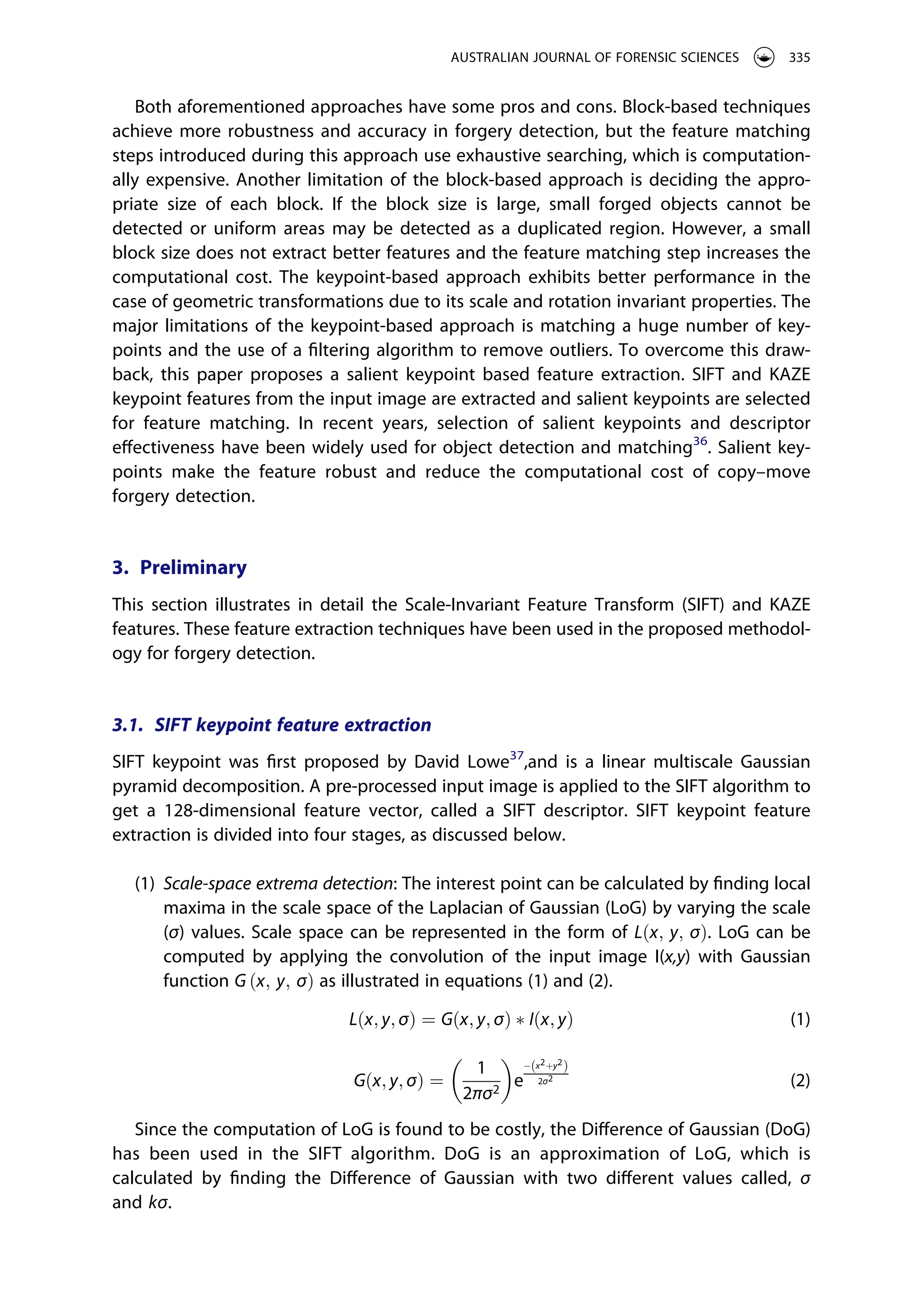
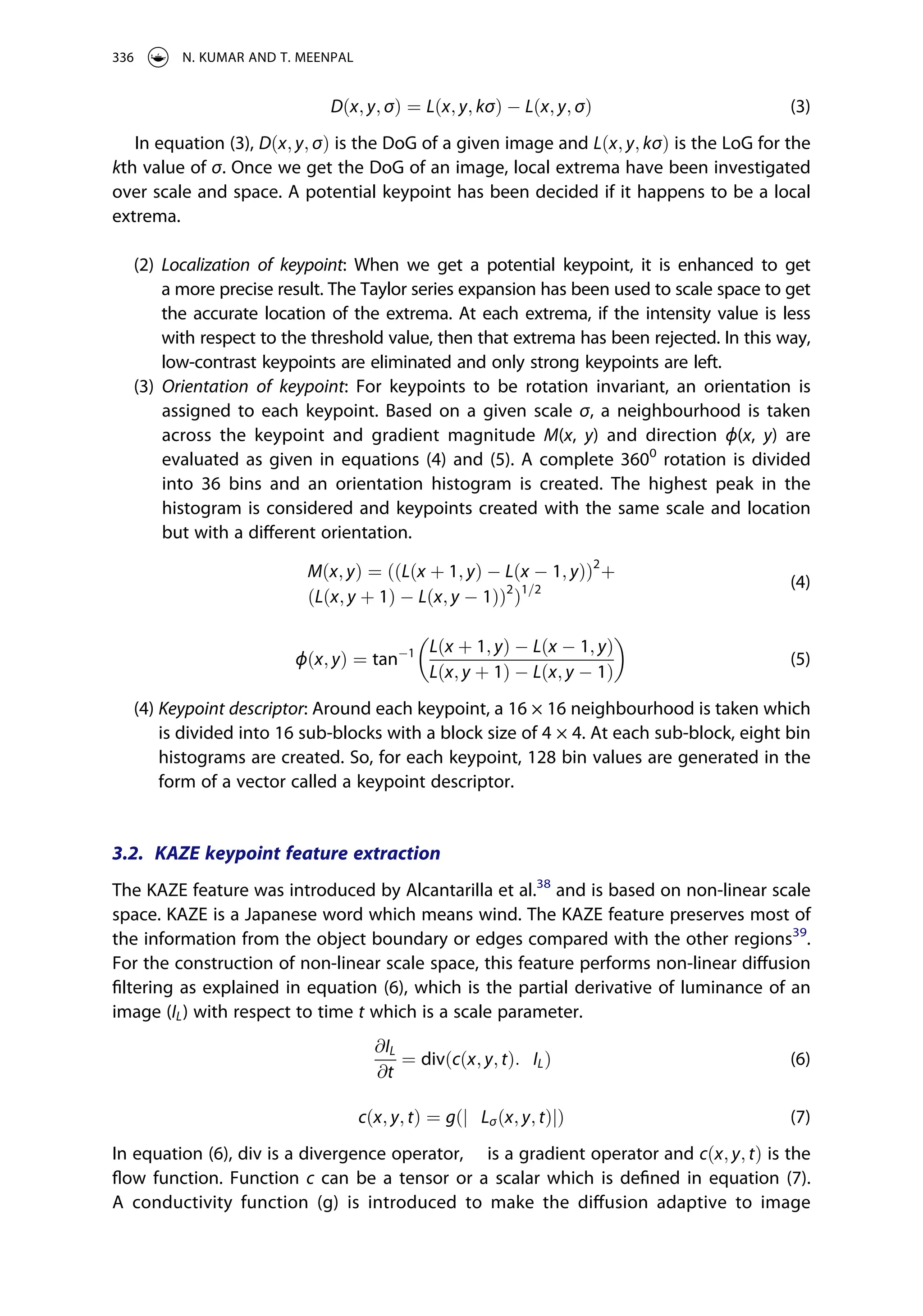
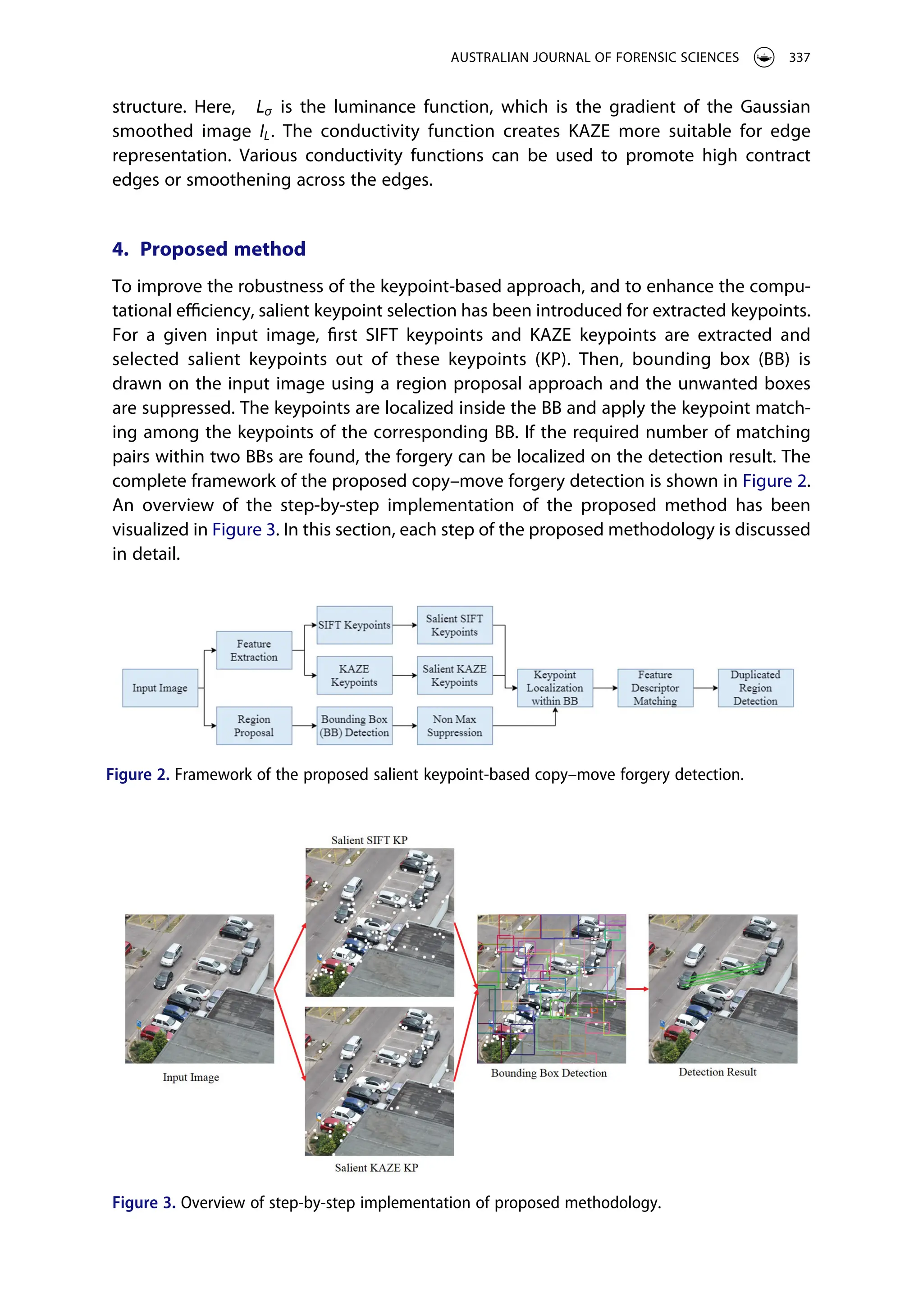
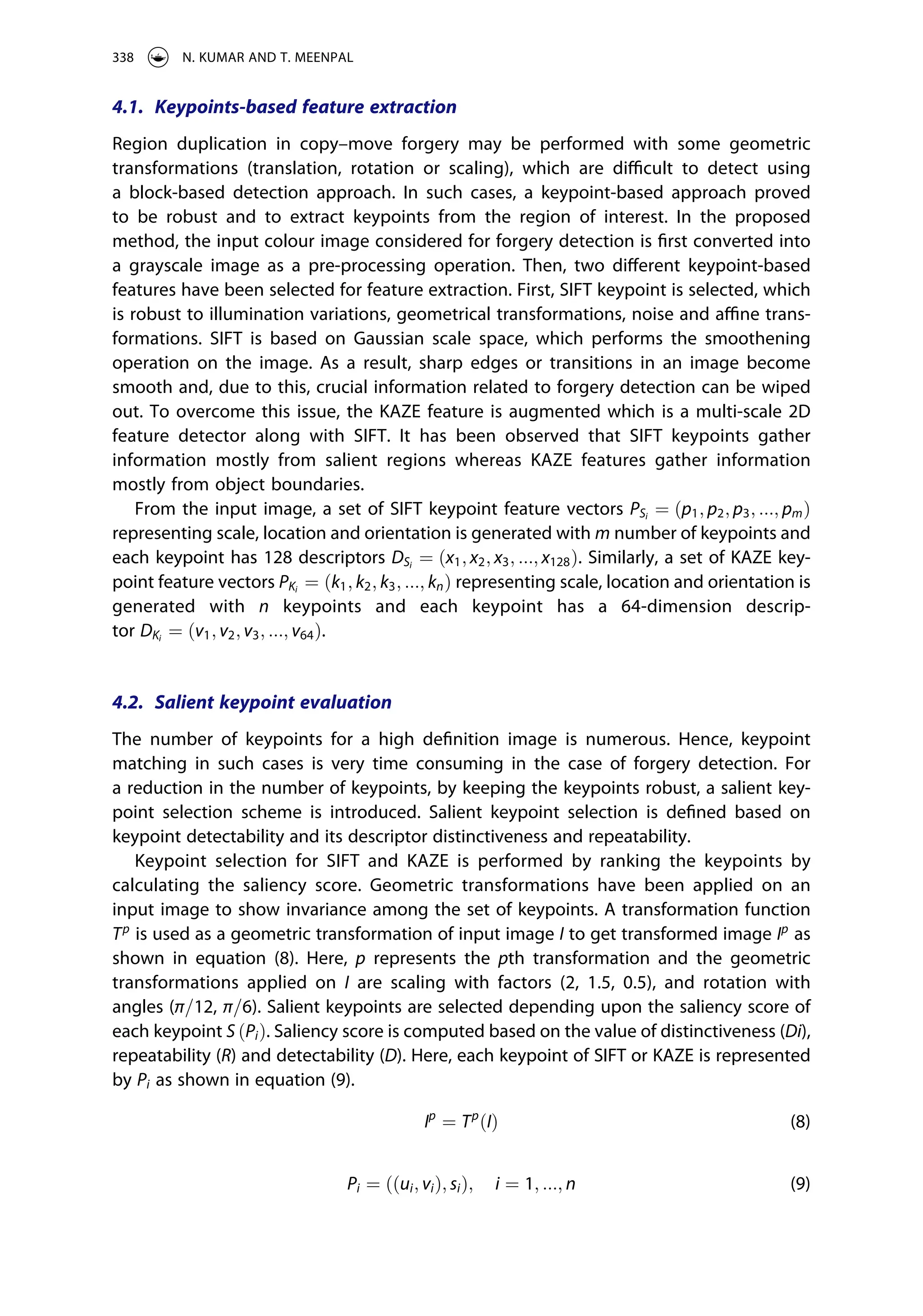
![where ðui; viÞ is the location of the ith keypoint, si is the strength of corresponding
keypoint and n is the total number of keypoints. The saliency score for each keypoint
can be calculated as:
SðPiÞ ¼ DiðPiÞ þ RðPiÞ þ DðPiÞ (10)
where in equation (10), DiðPiÞ is distinctiveness, R ðPiÞ is repeatability and D ðPiÞ is
detectability of the ith keypoint respectively.
(1) Distinctiveness: It is defined as diversity of a keypoint descriptor from the other
keypoints in an image. This can be measured by finding summation of Euclidean
distance (L) of each pair of keypoint descriptors in an image as explained in
equation (11).
DiðPiÞ ¼
1
n 1
X
ðui;viÞ2Pi;i�j
Lðdi; djÞ (11)
(2) Repeatability: It is the estimation of invariance of the keypoints descriptor across
various transformations. This can be measured by finding the average of the
Euclidean distance of the keypoint descriptor in the input image and corresponding
keypoint descriptor of transformed image. In equation (12), t represents the num
ber of geometric transformations.
RðPiÞ ¼
1
t
X
n
ði;jÞ21
Lðdi; dp
j Þ (12)
(3) Detectability: It is defined as the ability of a keypoint to be detected under different
lighting conditions or viewpoints. Detectability of a keypoint is calculated as the
average strength(s) of each keypoint and its corresponding transform as discussed
in equation (13).
DðPiÞ ¼
1
t
X
n
i21
si (13)
The saliency score of each keypoint is calculated using equation (10) by normalizing the
score of Di, R and D in the range [0,1], and the mean of saliency score (μS) is calculated as
mentioned in equation (14). Salient keypoint PS for SIFT and KAZE is selected as per
equation (15), if the SðPiÞ is greater than the μS. Here, μS is considered as salient score
threshold value. Only those keypoints having salient score greater than μSare selected as
salient keypoints. The procedure for selection of salient keypoints for SIFT and KAZE is
explained in proposed Algorithm 1.
μS ¼
1
n
X
n
1
ðSðPiÞÞ (14)
PS ¼ Pi; when SðPiÞ � μS; i ¼ 1; :::; n (15)
AUSTRALIAN JOURNAL OF FORENSIC SCIENCES 339](https://image.slidesharecdn.com/salientkeypoint-basedcopymoveimageforgerydetection-240306170303-16f304e6/75/Salient-keypoint-based-copy-move-image-forgery-detection-pdf-10-2048.jpg)
![Algorithm 1: Selection of Salient SIFT and KAZE keypoints from a given image
1 Input: Input image (I) and transformed image (IP
)
Output: PS
2 Compute SIFT and KAZE keypoint (P) from I and Ip
, let n be the number of SIFT or
KAZE KP.
3 P0
¼ ½�
4 for Pi, i 1 to n do
5 Selection of matching keypoints(P0
) between I and IP
.
6 if P I
ð Þ ¼ PðIp
Þ then
7 P0
j Pi where i ¼ 1; :::; n
8 end
9 end
10 S = []
11 for P0
j, j 1 to m do
12 S ðP0
jÞ ¼ Di ðP0
jÞ þ R ðP0
jÞ þ D ðP0
jÞ
13 by using equations (11)–(13)
14 end
15 PS ¼ ½�
16 for Pj j 1 to m do
17 if S ðP0
jÞ � μS then
18 PS ¼ P0
j
19 end
20 end
SIFT and KAZE keypoints and their corresponding selected salient keypoints are visualized
in Figure 4. Salient SIFT and KAZE keypoints are plotted together in the third column of
the image and a considerable reduction in the number of keypoints can be observed. This
reduction in the value of n drags the attention to apply the salient keypoint selection,
which reduces the time required in feature matching which is the decisive factor in copy–
move forgery detection.
4.3. Region proposal using selective search
In copy–move forgery, mostly objects have been duplicated. To improve the detection
accuracy, there is a need to first detect the different objects present in the image and then
check for duplication. Motivated by this idea, a selective search-based region proposal has
been used for detecting objects in the image as discussed in Uijlings et al.5
. In an image,
a region proposal finds out prospective objects using segmentation. A region proposal is
executed by combining pixels into smaller segments. The region proposals generated are
of different scales and with varying aspect ratios, as explained in Verma et al.40
. The region
proposal approach used here is much faster and efficient compared with the sliding
window approach for object detection. The selective search uses segmentation based on
image structure to generate class independent object locations. Four different image
340 N. KUMAR AND T. MEENPAL](https://image.slidesharecdn.com/salientkeypoint-basedcopymoveimageforgerydetection-240306170303-16f304e6/75/Salient-keypoint-based-copy-move-image-forgery-detection-pdf-11-2048.jpg)
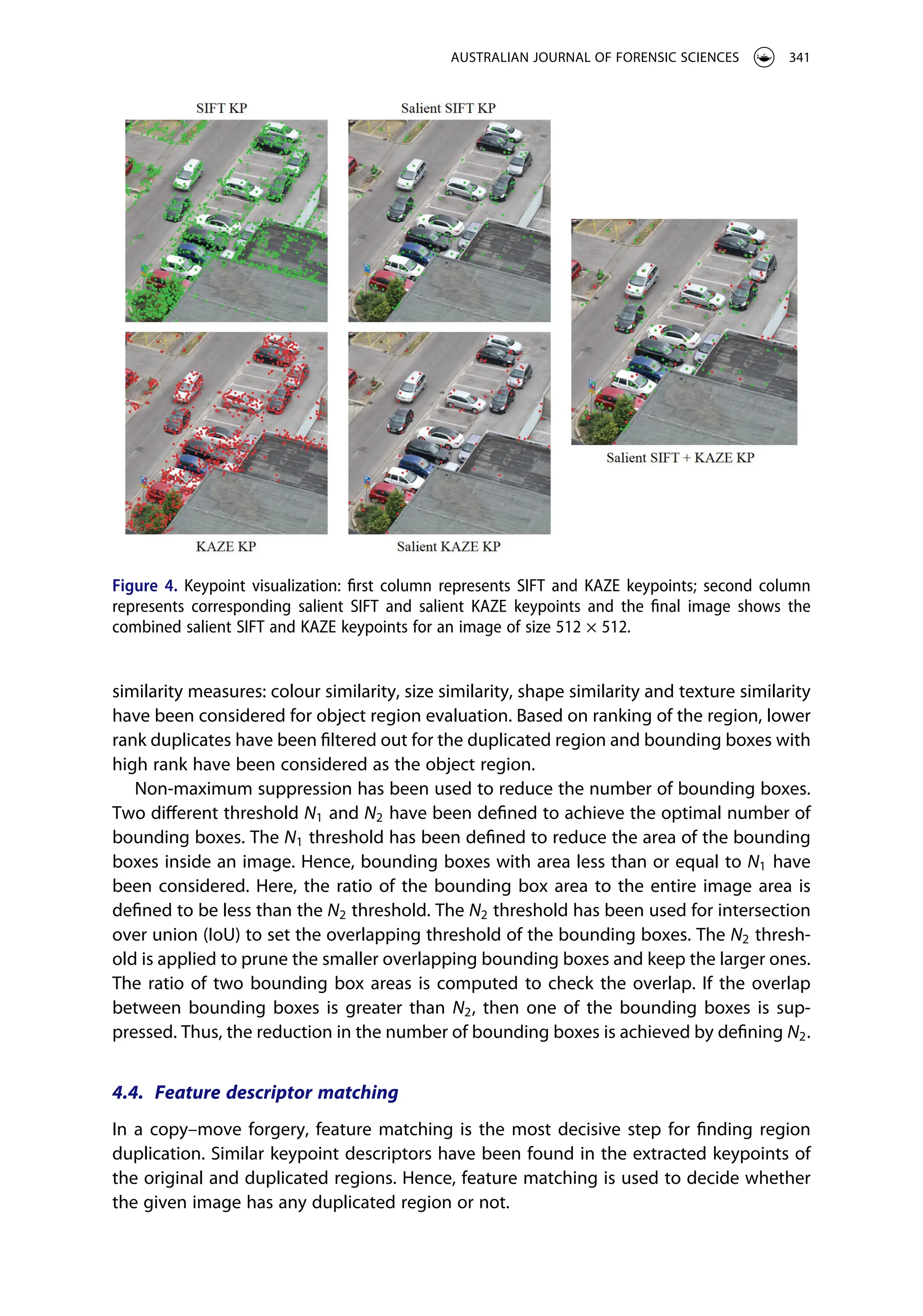
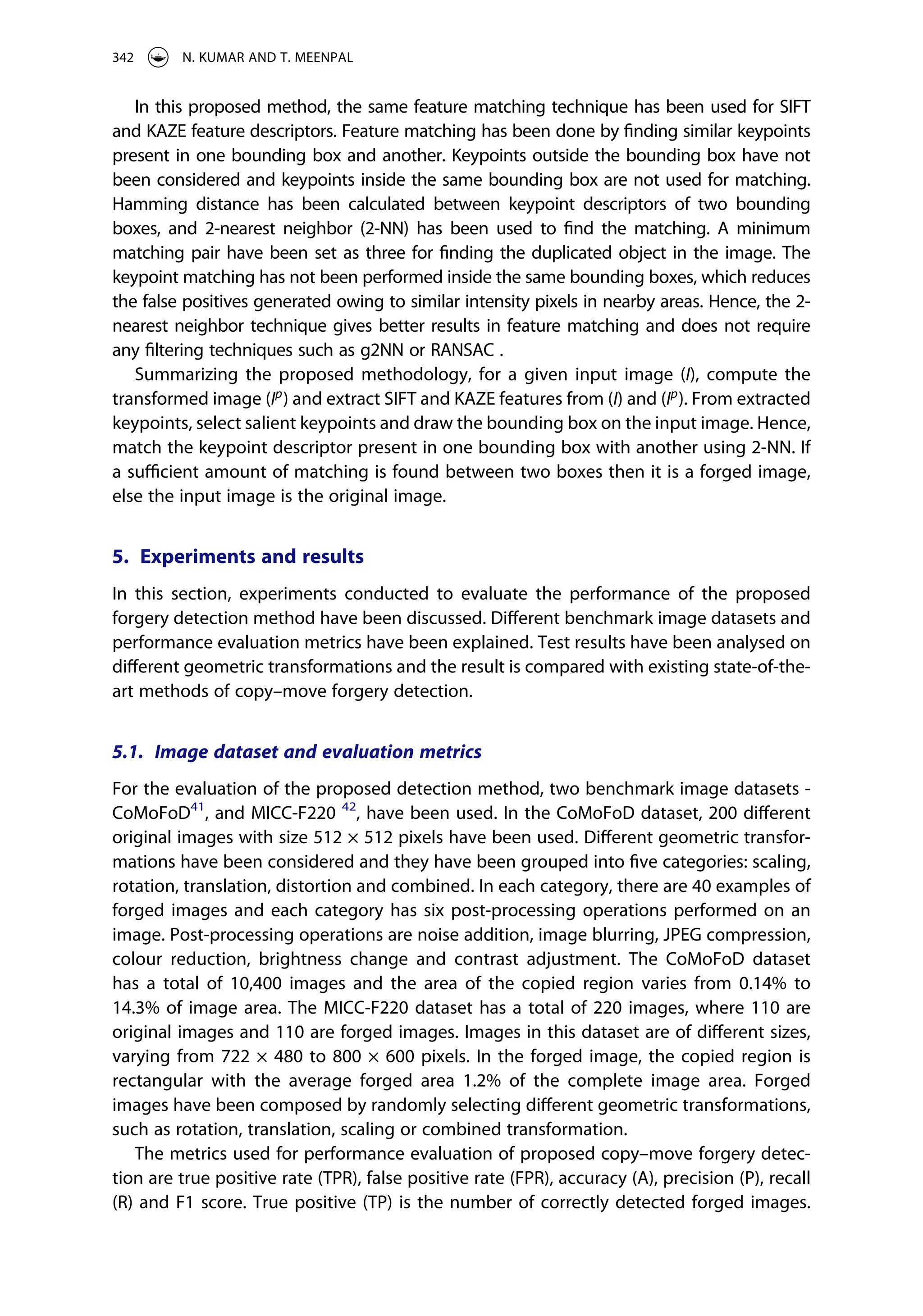
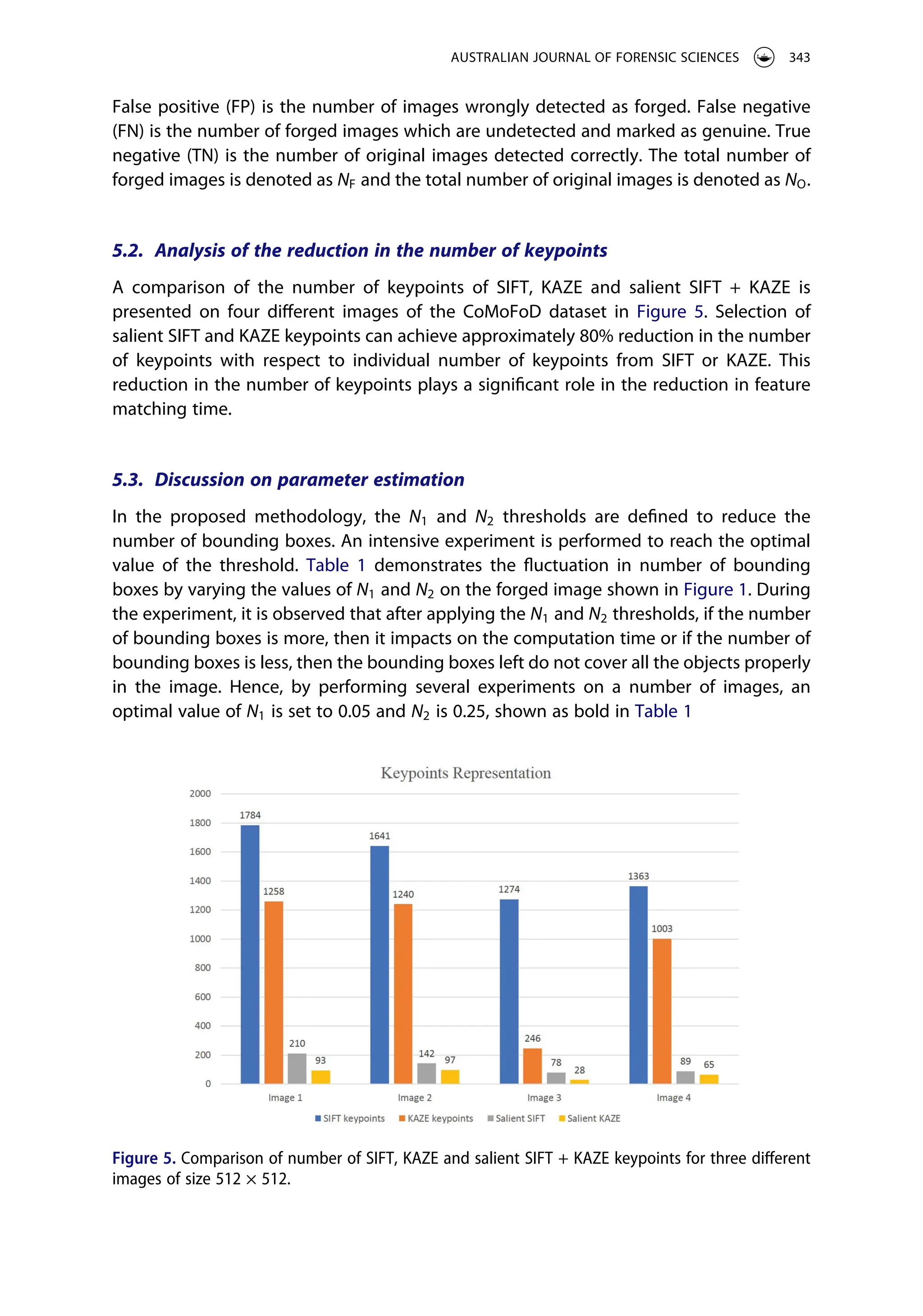
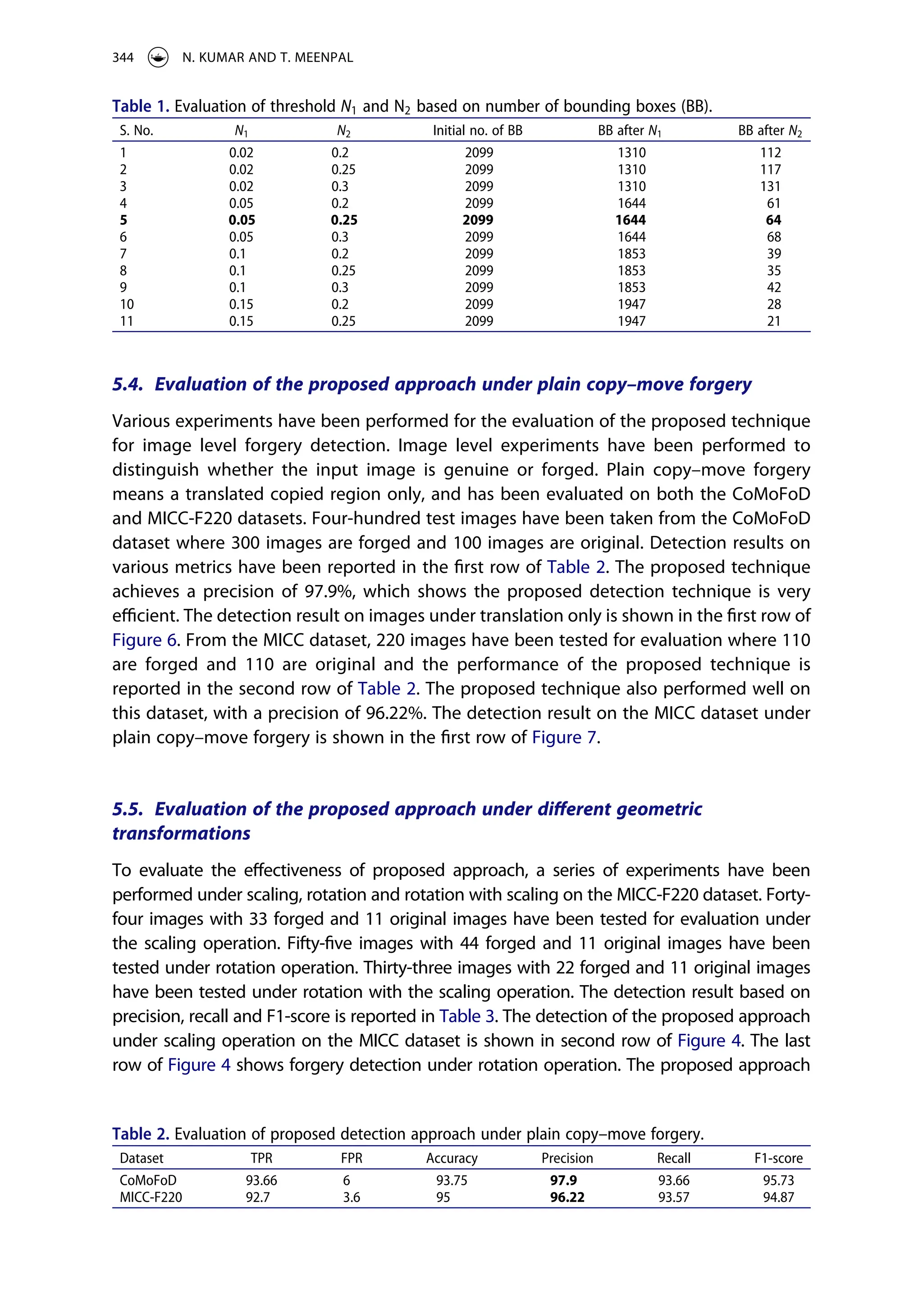
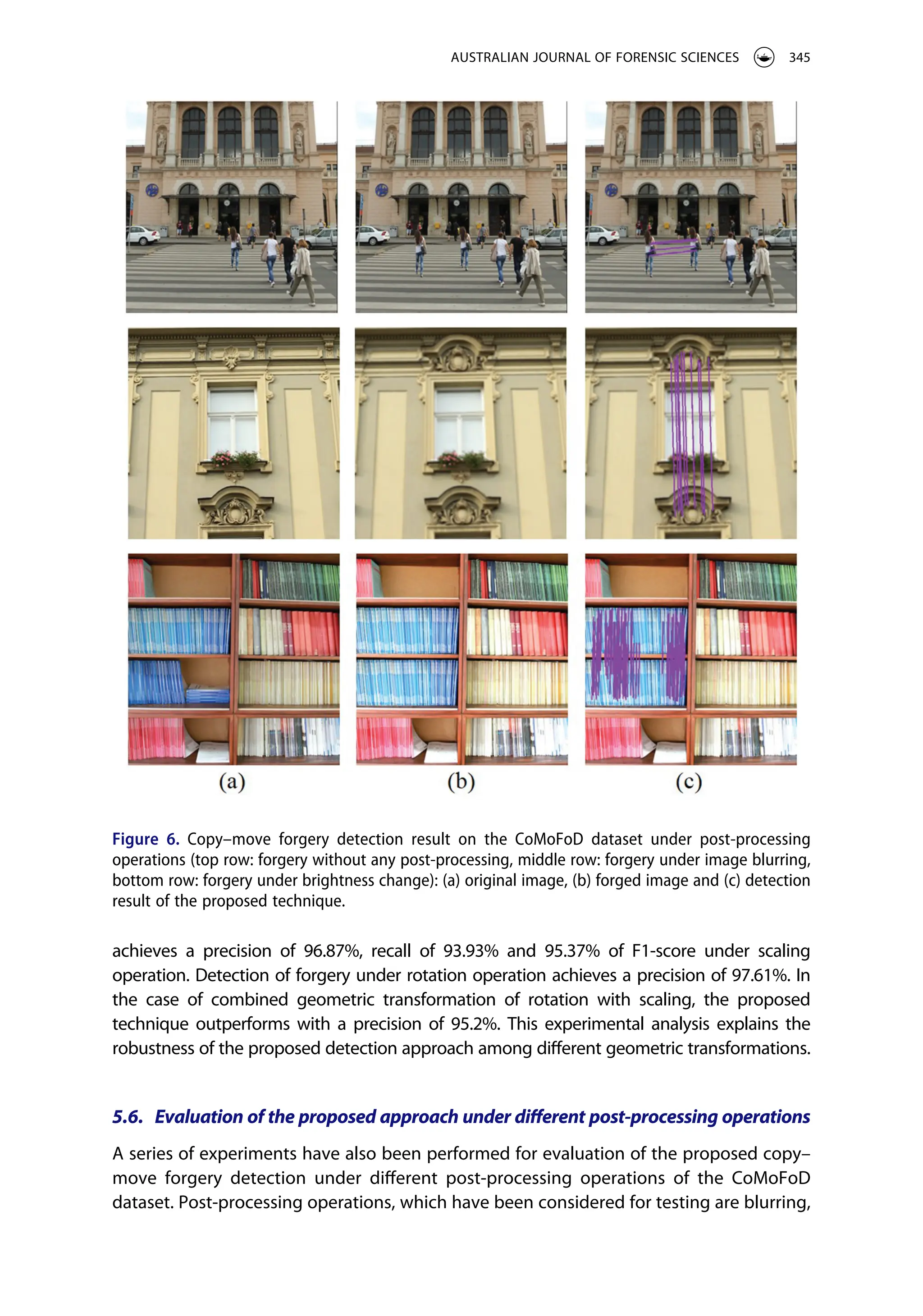

![An experimental analysis is also performed to justify the robustness of the proposed
method under noise addition. In this case, detection of 120 forged images with white
Gaussian noise having zero mean and variance (σ2
) range of [0.0005, 0.005, 0.009] is
performed. The detection result under noise addition is illustrated in Figure 10, which
shows that the proposed approach is not much affected by noise addition. Another
experiment is also performed under colour reduction with a varying number of colours
per channel: [128, 64, 32]. The detection result under colour reduction is illustrated in
Figure 11, which shows that the proposed approach performed well even after changing
the number of colours per channel. Contrast adjustment is another post-processing
operation on which the robustness of the proposed method is tested. The detection
result on different contrast ranges is shown in Figure 12, which shows the effectiveness of
the proposed method under different contrast changes. This evaluation shows that the
proposed approach is not much affected by blurring or brightness change operations,
which shows robustness against the post-processing operations.
5.7. Comparative analysis of the proposed approach with existing detection
approaches
The experimental results demonstrated above of the proposed approach, show the
efficient detection of copy–move forgery under different geometric transformations and
post-processing operations. Comparative analysis based on TPR, FPR, precision and F1-
score have been performed with existing detection approaches21,43–47
on the MICC-F220
dataset, and the performance of proposed method is highlighted in bold in Table 4. It is
observed that the proposed method has better performance among all methods except47
Figure 8. Detection result under blurring operation with different averaging filter size.
AUSTRALIAN JOURNAL OF FORENSIC SCIENCES 347](https://image.slidesharecdn.com/salientkeypoint-basedcopymoveimageforgerydetection-240306170303-16f304e6/75/Salient-keypoint-based-copy-move-image-forgery-detection-pdf-18-2048.jpg)
